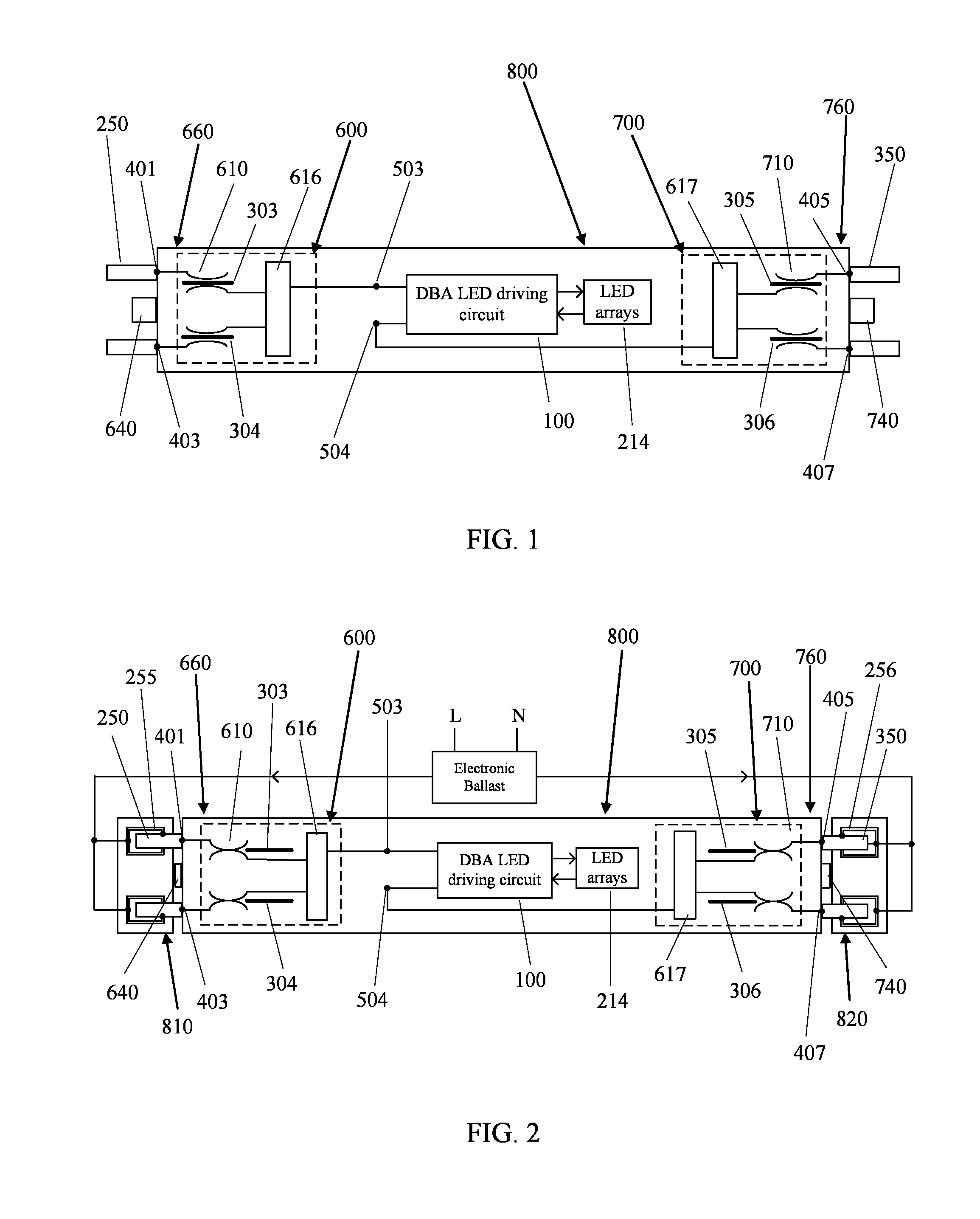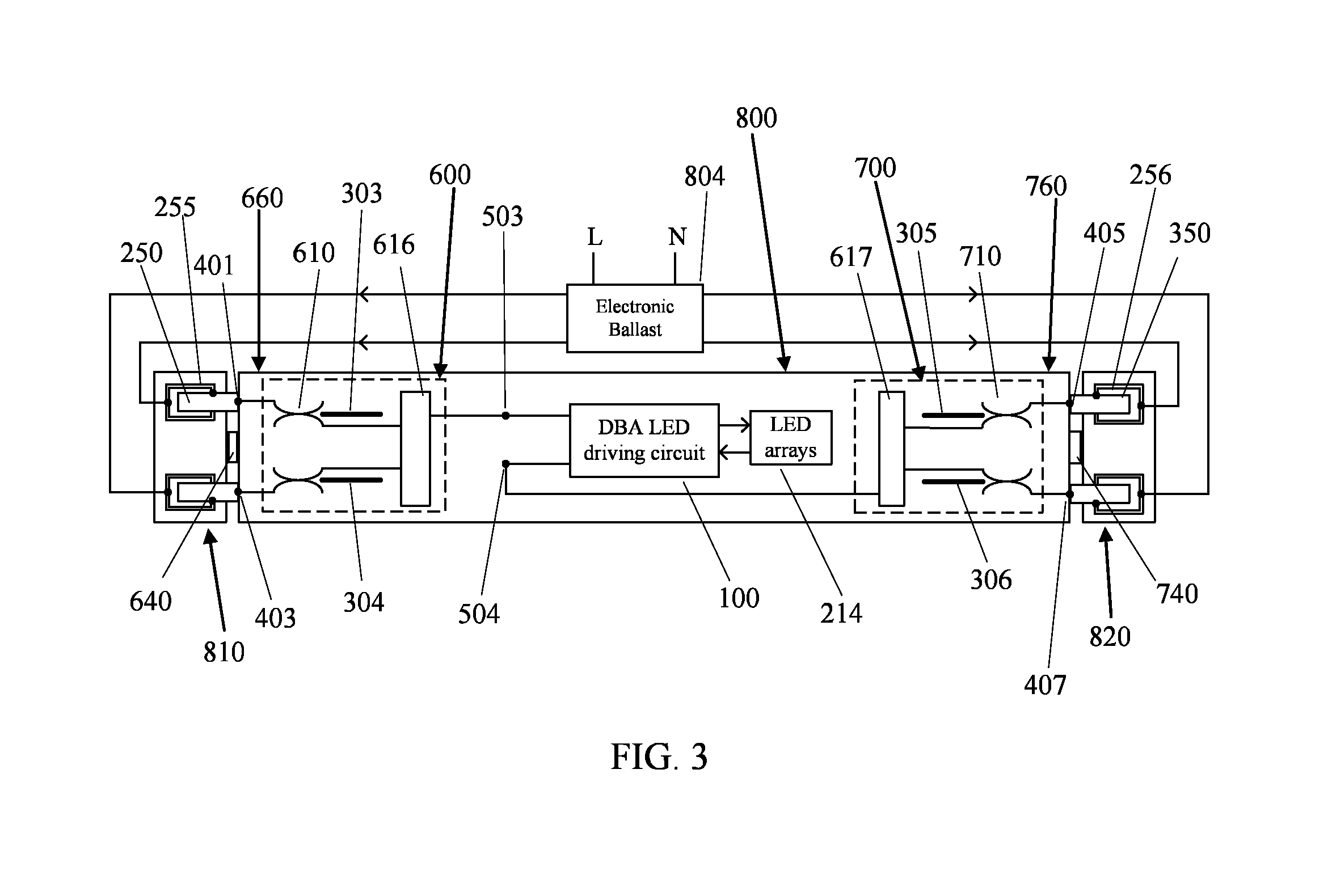Linear solid-state lighting with an arc prevention switch mechanism free of fire and shock hazards
a technology of arc prevention switch and linear led tube lamp, which is applied in the direction of lighting safety devices, semiconductor devices of light sources, lighting and heating apparatus, etc., can solve the problems of high total cost of ownership, inability to effectively control arc extinguishers, and inability to identify ballasts and replace incompatible parts, etc., to achieve electric shock free for consumers, high temperature, and effective control of arc extinguishers
- Summary
- Abstract
- Description
- Claims
- Application Information
AI Technical Summary
Benefits of technology
Problems solved by technology
Method used
Image
Examples
Embodiment Construction
[0022]FIG. 1 is a block diagram of a universal LLT lamp operable with an external power supply (e.g., either the AC mains or an electronic ballast), in which integrated arc and shock prevention switches are used according to the present disclosure. The universal LLT lamp 800 comprises a housing having two ends; two lamp bases 660 and 760 having respective bi-pins 250 and 350 at each end of the housing; a first and a second input modules 600 and 700 respectively comprising integrated arc and shock prevention switches 610 and 710 and filament circuits 616 and 617; two actuation mechanisms 640 and 740 of the integrated arc and shock prevention switches 610 and 710 respectively in the two lamp bases 660 and 760; a double-ended ballast and AC mains ready (DBA) LED driving circuit 100 having two input / outputs 503 and 504; and LED arrays 214 on an LED PCB. Each of the filament circuits 616 and 617, comprising at least a resistor, has three ports in which the first and the second ports conn...
PUM
 Login to View More
Login to View More Abstract
Description
Claims
Application Information
 Login to View More
Login to View More - R&D
- Intellectual Property
- Life Sciences
- Materials
- Tech Scout
- Unparalleled Data Quality
- Higher Quality Content
- 60% Fewer Hallucinations
Browse by: Latest US Patents, China's latest patents, Technical Efficacy Thesaurus, Application Domain, Technology Topic, Popular Technical Reports.
© 2025 PatSnap. All rights reserved.Legal|Privacy policy|Modern Slavery Act Transparency Statement|Sitemap|About US| Contact US: help@patsnap.com



